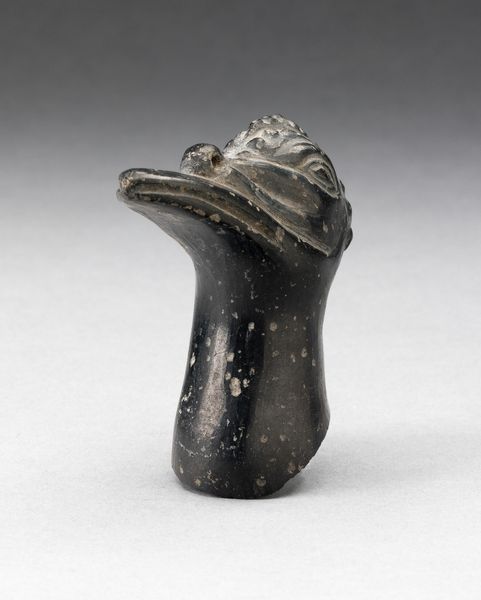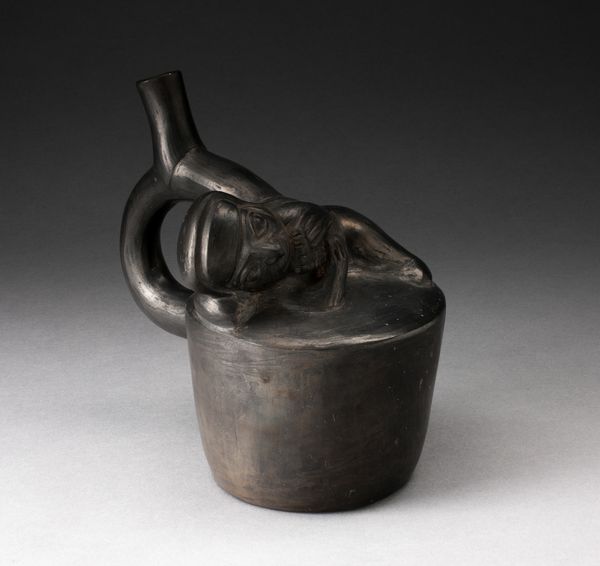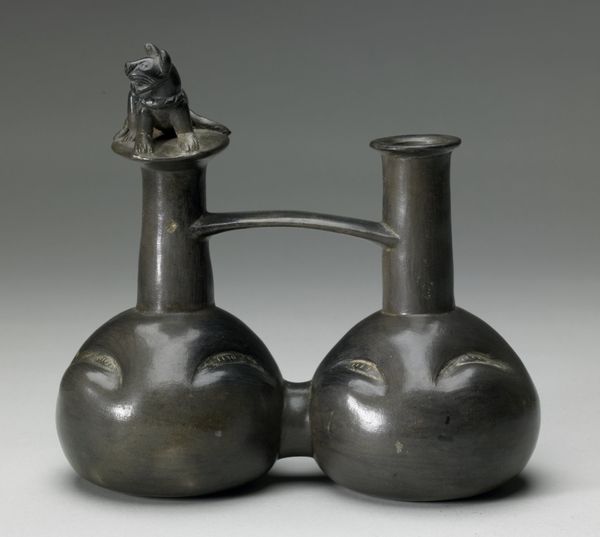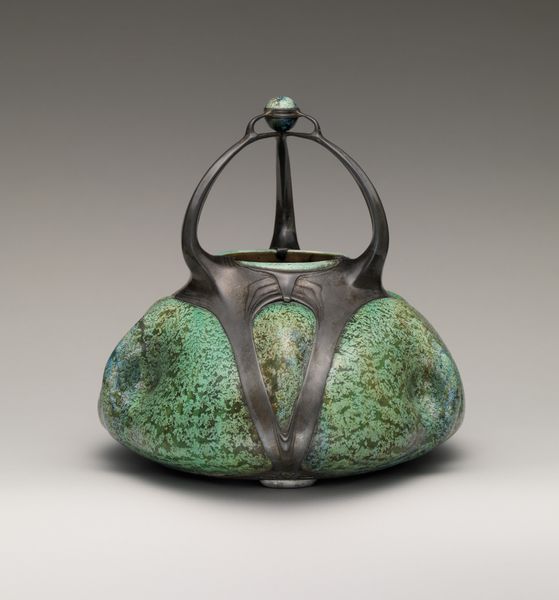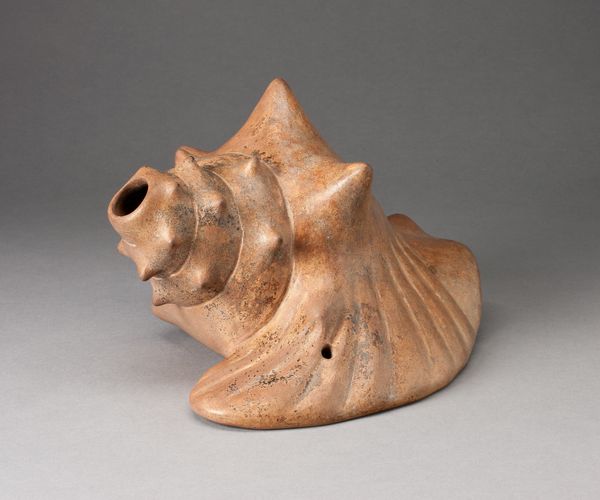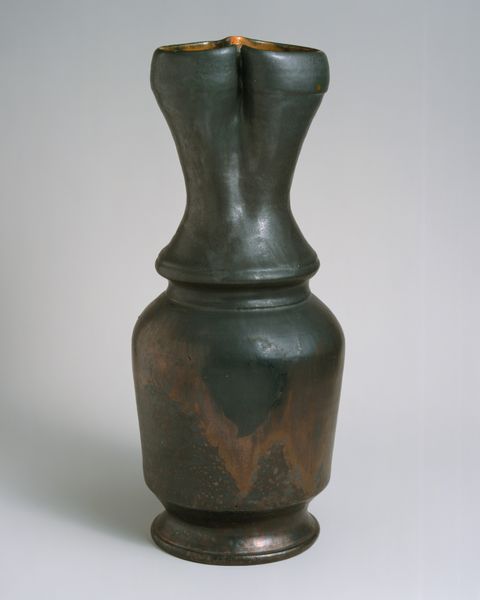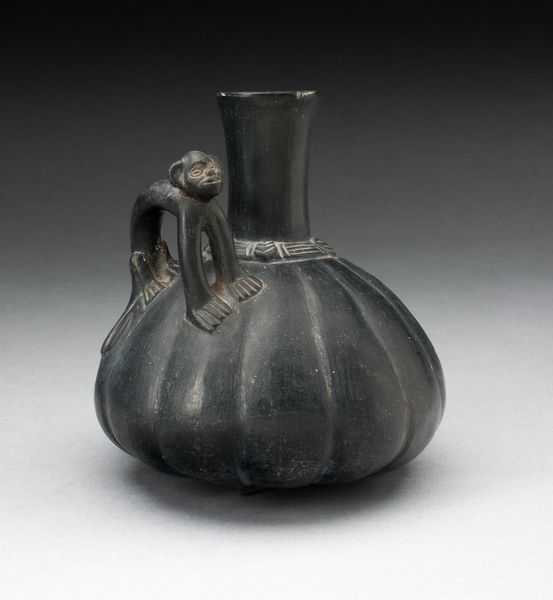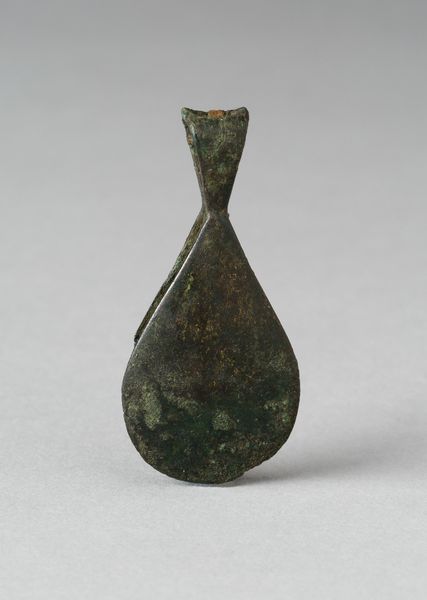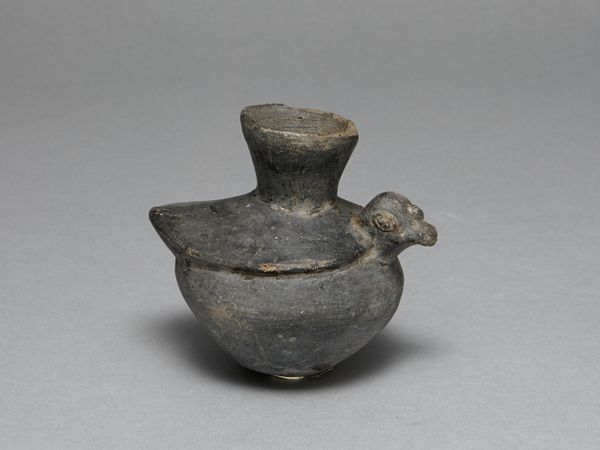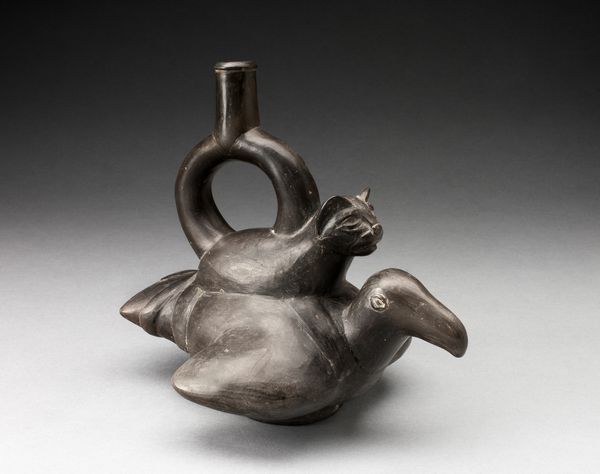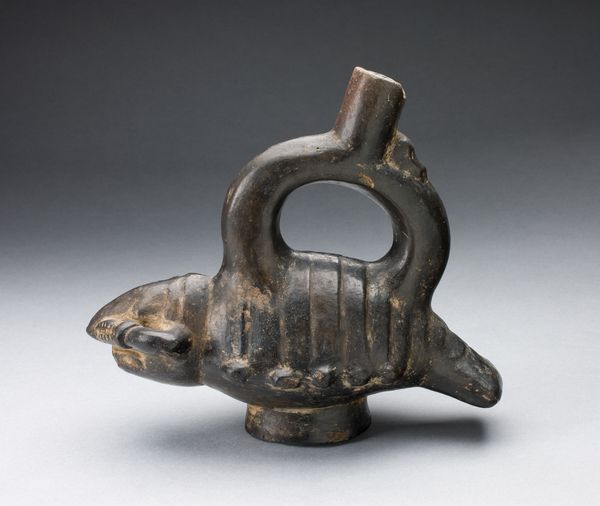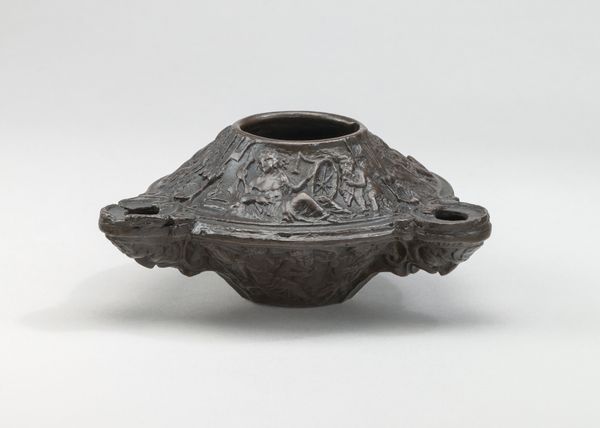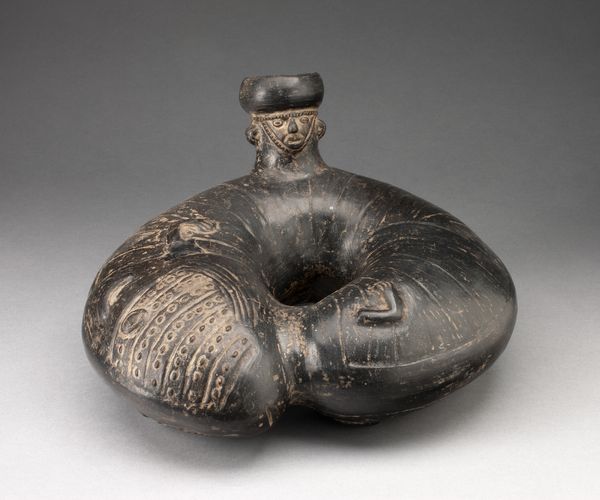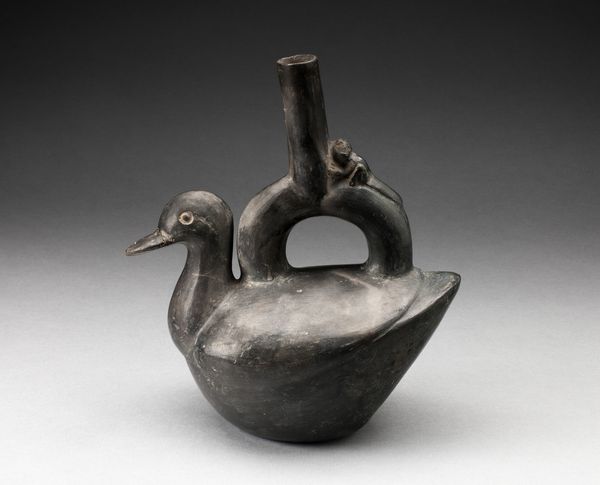
Dimensions: object: 186 x 264 x 224 mm
Copyright: © Succession Miro/ADAGP, Paris and DACS, London 2014 | CC-BY-NC-ND 4.0 DEED, Photo: Tate
Curator: Here we have Joan Miró's sculpture, "Woman," currently residing in the Tate Collections. Editor: It's unexpectedly weighty, isn't it? Visually anchoring, like a dark, dreamy mountain. Curator: Indeed. Miró often blurred the lines between painting and sculpture. The materiality here—perhaps bronze or a patinated metal— speaks to this. We see a tension between raw material and refined form. Editor: You can almost feel Miró's hand at play, shaping and molding. It's interesting how a simple form becomes so evocative. The process becomes part of the narrative. Curator: It is fascinating how Miró distills the essence of "woman" to such simple abstract forms. Perhaps it's an exploration of archetypes, a nod to fertility. Editor: Seeing the work this way, it makes me consider how material, labor, and context intertwine to create meaning and challenge established ideas of art. Curator: A very interesting point. There is so much to consider when we engage with art! Editor: Absolutely, and I'm eager to continue thinking about it!
Comments
Join the conversation
Join millions of artists and users on Artera today and experience the ultimate creative platform.
tate 7 months ago
⋮
This is one of Miró’s earliest bronze sculptures, cast from a clay model. Part of the attraction of the medium was, he said, ‘the need to mould with my hands - to pick up a ball of wet clay like a child and squeeze it. From this I get a physical sensation that I cannot get from drawing or painting’. Like his other bronzes, Woman developed out of detailed preparatory drawings, although the original sketch included both male and female characteristics. Miró often used a triangle shape to represent the female figure. Gallery label, March 2011
